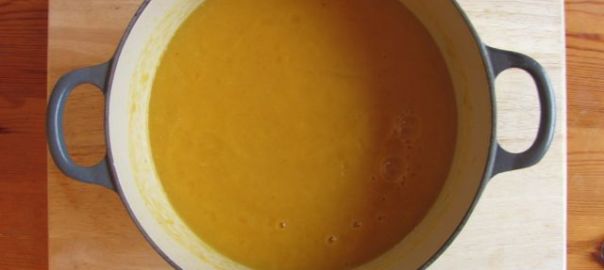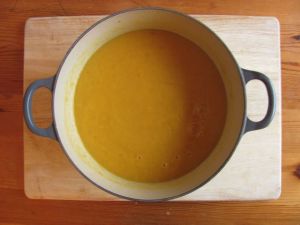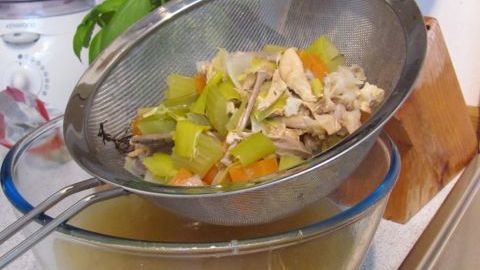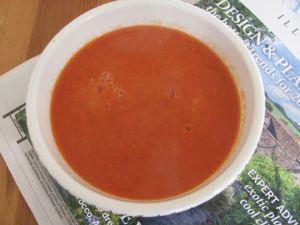I do pastry. I do bread, too. But I can’t do cakes – or rather there are a limited number of cakes which I can do, and which work well. But something like a Victoria sponge? Touch and go. However, pastry – no problems. So when I know people are coming round I don’t make a cake, I make a tart. Or perhaps I’d better call them flans, to avoid any sniggering at the back. Nope – tarts they are, and tarts they will remain. Or tartes, since the origin of mine is indisputably French.
 There is something about a slice of fruit tart served on bone china, with a healthy dollop of cream or Greek yoghurt. It somehow feels special, more special than a slice of Victoria sponge – given the nature of my sponge, this is not surprising, mind. So when I knew I had people coming round and spotted that the Co-op had suddenly received a consignment of white-fleshed nectarines and were selling them off cheaply for some reason (I’m not complaining), I felt the call.
There is something about a slice of fruit tart served on bone china, with a healthy dollop of cream or Greek yoghurt. It somehow feels special, more special than a slice of Victoria sponge – given the nature of my sponge, this is not surprising, mind. So when I knew I had people coming round and spotted that the Co-op had suddenly received a consignment of white-fleshed nectarines and were selling them off cheaply for some reason (I’m not complaining), I felt the call.
So what about pastry? Is it phenomenally difficult? I don’t think so, but then there are people out there who wouldn’t believe that a grown woman could mess up a Victoria sponge. There are all sorts of stories about chilling your hands in cold water or – I kid you not – wiping ice cubes over the surface, and lots of people have unorthodox methods that work for them. You do need to keep pastry cool, of course, but my hands aren’t particularly chilly, my worktop is unbrushed by ice cubes and my pastry still works. Just chill it (man). As long as the pastry is a fine crispy shortcrust, it doesn’t really matter how it’s made.
Anyway, here goes, my fruit tart made with pâte brisée, a version of the classic French shortcrust which I have found works really well. In the UK, it’s usual to rub the fat into the flour first; in France you don’t. I go for the British way because I just hate breaking up raw egg with my fingers (eeeeuuh).
Nectarine tart with almonds
for a 23cm loose-bottomed tin
For the pastry:
50g butter, at room temperature
125g plain flour
I small egg
Make the pastry first, because it needs to chill for 30 minutes and will be baked blind, anyway. Put the butter into a large bowl and cut it into small pieces with a knife. Sieve the flour into the bowl and then rub the two together with your fingers until the mixture resembles fine breadcrumbs – this always takes longer than you think. Then add the egg, break it up with a fork and mix it in well. The pastry will come together gradually into a soft dough but don’t knead it like bread, just press it together gently and add a little very cold water if necessary – but it probably won’t be. Form it into a ball, put it into a clean bowl and cover it with clingfilm. Chill in the fridge for 30 minutes.
Pre-heat the oven to 200 degrees C, 180 fan, gas 6 and grease a loose-bottomed quiche tin. Lightly flour the worktop and take the pastry out of the fridge. Warm it up in your hands a little to soften it, then carefully roll it out into a circle, changing direction and turning it over; keep the worktop floured while doing so. Lift the pastry up, over the rolling pin, and carefully drape it over the tin. Then gently manipulate it into the corners and folds of the tin (patch any gaps; dip a pastry brush in milk and stick a new piece of pastry on top). Trim off the excess, ready for baking the case blind. Prick the bottom of the pastry and line it with a generous circle of greaseproof paper, tip a load of dried pulses or baking beans on top of the paper and bake for 15 minutes. Set it aside to cool for 10 minutes, then remove the baking beans and paper and let the case cool completely.
 For the filling:
For the filling:
80g butter
80g vanilla sugar
1 large egg, beaten
2 tsp Amaretto (optional)
100g ground almonds
1 tbsp flour
5 small nectarines
Pre-heat the oven to 200 degrees C, 180 fan, gas 6.
Cream the butter and sugar until light and fluffy. Gradually beat in the egg, adding a little of the flour as you do so. Then stir in the Amaretto, ground almonds and the rest of the flour; mix everything together well. Put this mixture into the tart case and level it down. Cut the nectarines into slices and put them on top of the filling in a circular pattern, saving the smaller slices for the inner circles. Then sprinkle a little more sugar on top and bake the tart in the oven for 10 minutes. Lower the temperature to 180/160/gas 4 and cook for another 20 minutes or so – check towards the end to make sure the fruit isn’t catching (a little caramelising is fine; burning is not, ho ho, don’t ask me how I know).
Serve warm (rather than hot) or cold. Cream or good Greek yoghurt served on the side is wonderful. Sigh.


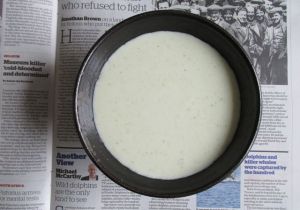


 1 small red onion
1 small red onion

 And, even if we haven’t all quite got back to the point where there are piglets playing about while we hang out the washing, the tradition of small-scale pig-rearing is also beginning to reappear.
And, even if we haven’t all quite got back to the point where there are piglets playing about while we hang out the washing, the tradition of small-scale pig-rearing is also beginning to reappear.

 The plants are easy to identify (even easier once they’re in flower), they’re easy to gather and they’re prolifically present in hedgerows and woodland – and my garden – just about now. And now’s the perfect time, because the leaves are still young. Plus it’s the start of the hungry gap, the time when stored fruits and vegetables have been used up and the new season is yet to get going.
The plants are easy to identify (even easier once they’re in flower), they’re easy to gather and they’re prolifically present in hedgerows and woodland – and my garden – just about now. And now’s the perfect time, because the leaves are still young. Plus it’s the start of the hungry gap, the time when stored fruits and vegetables have been used up and the new season is yet to get going.











